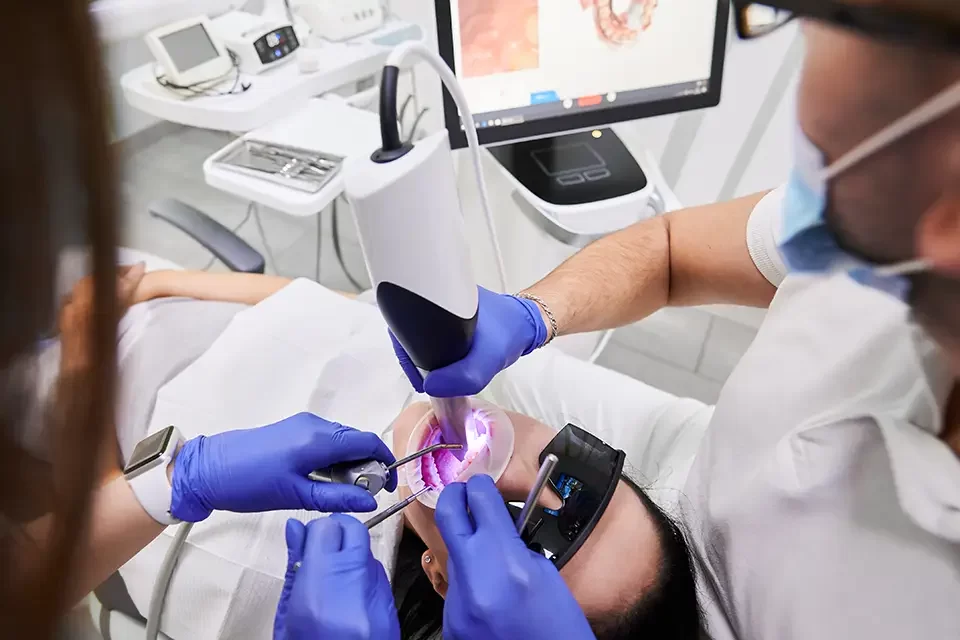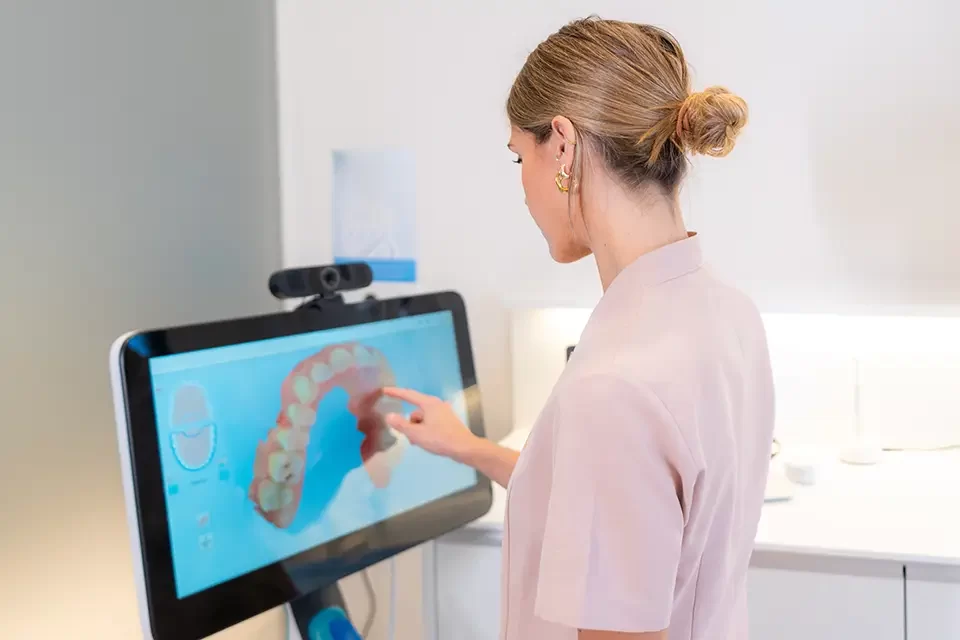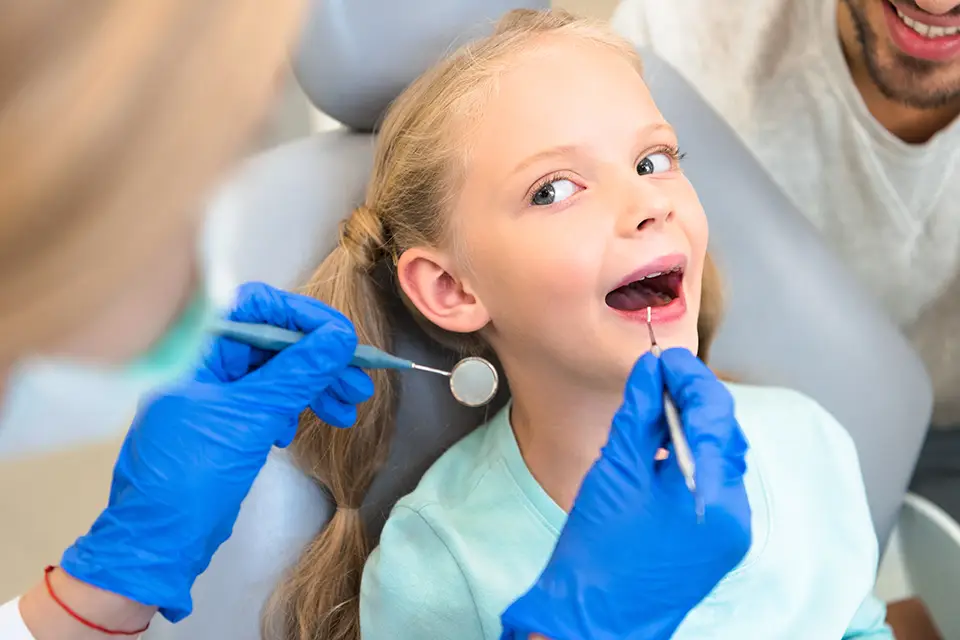Choosing a dental clinic isn’t only about proximity—it’s about how clearly your team can see what’s happening in your mouth and explain it. At Dental Land in Leslieville, we’re using AI to sharpen that view. These tools don’t replace your clinician; they act like a high-attention co-pilot that never gets tired of measuring, comparing, and highlighting tiny changes. That clarity translates into earlier, simpler treatments and fewer surprises at checkout.
If you’re searching for a dentist Leslieville residents can rely on, this guide walks through how AI fits into modern dental diagnostics, the kinds of tools you’ll actually see, and how they change everyday decisions about prevention and treatment. Our goal is simple: use technology to make visits calmer, conversations clearer, and outcomes more predictable—without adding complexity or pressure to your appointment.
What Modern Dental Diagnostics Means Today
At its core, modern dental diagnostics combines high-quality imaging, risk assessment, and trend tracking. Digital X-rays, intraoral photos, 3D scans (CBCT), bite analysis, and salivary testing build a detailed picture. AI adds pattern recognition: it compares your images to vast training sets and your own past records to flag subtle changes—bone levels, early decay, or tiny root issues—so your dentist can double-check and discuss options while you’re still in the chair.
Read More: Complete Guide to the Canadian Dental Care Plan (2025)
How AI Elevates Modern Dental Diagnostics
AI improves the three things that matter most during an exam:
- Consistency: The same criteria are applied every time, reducing day-to-day variability.
- Speed: Results surface in seconds, so discussions happen in real time.
- Clarity: Annotated images help you see exactly what your dentist sees.
That combination turns complex images into clear, shared decisions.
Tools You Might See in Modern Dental Diagnostics
You won’t meet “AI” as a single gadget. You’ll notice helpful features inside familiar tools:
- Caries Detection on X-rays: Highlights early enamel/dentin changes before a filling is needed.
- Periodontal Bone Analysis: Measures bone levels tooth-by-tooth for gum-health tracking.
- Endodontic Screening: Flags possible apical lesions so root issues aren’t missed.
- Oral Lesion Triage: Assists with pattern recognition on photos to guide timely referrals.
- Intraoral Scanner Intelligence: Identifies margins, compares wear over time, and stabilizes scans.
- CBCT Segmentation: Maps nerves, sinuses, and bone density to plan safely and precisely.
Each supports modern dental diagnostics by turning pixels into measurements you can act on.

Why Patients Feel the Difference with Modern Dental Diagnostics
Technology only matters if it helps real people. Here’s how it shows up day-to-day:
In the Chair
You’ll see overlays on your images, not just hear a description. That makes choices—watch, remineralize, or restore—feel straightforward.
At Home
Risk-based prevention becomes specific: where to focus brushing, whether a night guard will help, and how often to return.
Over Time
Because modern dental diagnostics tracks trends, we can celebrate improvements and catch relapses early—before they become bigger treatments.
Accuracy, Judgment, And Safety in Modern Dental Diagnostics
AI can over-flag or under-flag, which is why it’s never the final word. At Dental Land, we follow three safeguards:
- Human-First Review: Your dentist validates every AI suggestion.
- Multiple Data Points: We cross-check images with probing, photos, symptoms, and history.
- Conservative Thresholds: Small or uncertain findings are monitored, not rushed into treatment.
This keeps modern dental diagnostics helpful without being pushy.
Read More: Cosmetic Dental Procedures
Data Privacy in Modern Dental Diagnostics
Your images and health information are handled with strict safeguards—encrypted storage, role-based access, and clear retention policies. We select AI platforms that provide audit trails and comply with healthcare privacy standards. Your data exists to support your care plan, not to travel without purpose.
A First Visit: Modern Dental Diagnostics in Action
We keep the flow simple and transparent:
- History & Goals: Medications, habits, past treatments, and your priorities.
- Imaging & Photos: Low-dose digital X-rays and crisp intraoral photography for a clean baseline.
- AI-Assisted Review: Software highlights areas of interest; we walk you through each overlay in plain language.
- Prioritized Plan: “Treat now,” “monitor,” and “prevent”—with reasons you can see on screen.
- Take-Home Notes: Clear next steps, timelines, and tips tailored to your risks.
You leave understanding what we found and why the plan makes sense.
Costs And Access: The Money Side of Modern Dental Diagnostics
You shouldn’t need a new budget line for AI. At Dental Land, these tools are built into routine exams and imaging; there’s no separate “AI fee.” Because modern dental diagnostics helps us act earlier and avoid escalations, many patients find total costs steadier over time. If a test or scan isn’t clinically useful for your situation, we won’t recommend it—smart care beats more care.
Typical Considerations
- Exam and standard imaging fees cover most AI-assisted analysis.
- CBCT or specialized scans are only used when they change decisions.
- Preventive steps (varnish, sealants, night guards) are recommended based on measurable risk, not guesswork.

Myths That Hold People Back
- “AI replaces the dentist.” It doesn’t. It flags patterns; your clinician confirms or dismisses them.
- “More scans are always better.” Extra scans don’t help unless they change what we do next. We use the lowest necessary exposure, on purpose.
- “AI finds problems that aren’t real.” Over-flags can happen; that’s why we verify with exams and history before treating.
Clearing up these myths keeps technology in its proper place—supportive, not intrusive.
Prevention Gets Smarter with Modern Dental Diagnostics
Prevention is where AI quietly shines. By quantifying risk, we can:
- Target Hygiene: Focus exactly where plaque and demineralization keep appearing.
- Customize Recall: Use evidence to set 3, 4, or 6 month intervals that fit your risk—not a cookie-cutter schedule.
- Protect Teeth at Night: Use wear data to decide whether a night guard will meaningfully help.
- Track Kids’ Growth: Compare images year-to-year to guide sealants, orthodontic timing, and home routines.
Small, specific tweaks—guided by modern dental diagnostics—add up to fewer urgent visits.
What To Ask at Your Next Appointment
Keep this short list on your phone:
- “Can you show me where the AI flagged changes and what that means?”
- “Would prevention be enough here, or do we need a restoration—and why?”
- “If we wait, what’s the realistic risk over the next 6–12 months?”
- “How will we track this area—photos, X-rays, or a scan—and when?”
Good questions turn modern dental diagnostics into a shared decision, not a lecture.
Conclusion: Clearer Conversations with Modern Dental Diagnostics
AI isn’t the star of the show—you are. Used well, it helps us spot issues sooner, explain them better, and choose the lightest effective step. That’s the promise of modern dental diagnostics at Dental Land: calmer visits, fewer unknowns, and plans that fit real life. If you’d like us to review your current images, build a fresh baseline, or simply walk you through how the tech works, we’re happy to help. Book an appointment with Dental Land in Leslieville—bring your questions—and leave with a plan that feels informed, practical, and genuinely yours.







3 Responses